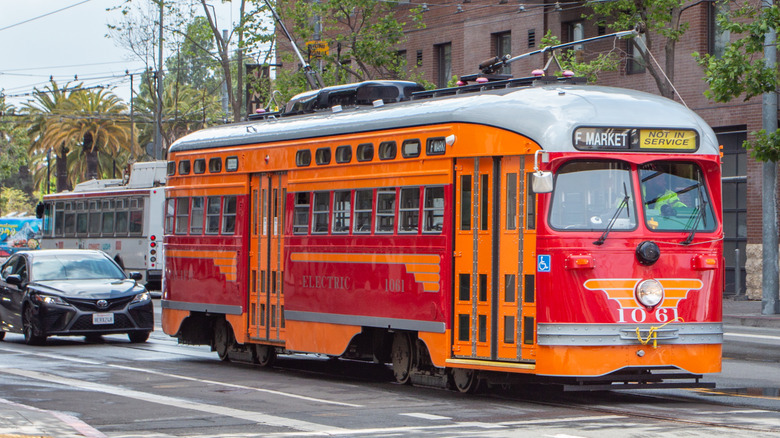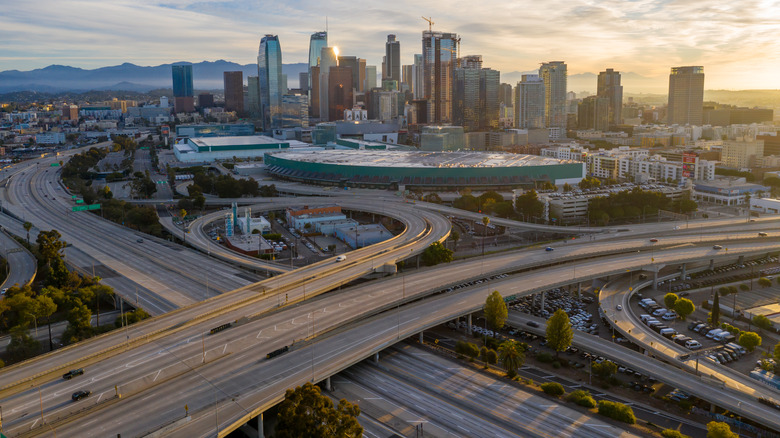LA's Legendary Red Car Conspiracy Explained
It might be hard to believe now, but at one point, Los Angeles had one of the largest mass transit systems in the world (via Curbed Los Angeles). According to the Los Angeles Almanac, the Pacific Electric red cars traversed more than 1,100 miles of tracks around Southern California. It had stops from Santa Monica to Orange County and San Bernardino (via The Los Angeles Daily News). Per the Long Beach Post, the red car trolley system was one of the only ways for people to get around in the first half of the 20th century. By 1961, however, all red cars ceased operations (via 99% Invisible).
Eventually, they were replaced by bus routes and freeways. This begs the question, what actually happened for the extinction of this once-great system to occur? That's where the red car conspiracy comes in. According to another Curbed Los Angeles article, the conspiracy involves companies (like General Motors) wanting LA to be an automobile mecca for financial gain. Thus the streetcar system was deliberately destroyed in order for this to happen. This would ensure that buses, cars, oil, and more would be purchased.
This conspiracy is so prominent, that it makes an appearance in the 1988 film "Who Framed Roger Rabbit." Like most things in Los Angeles, this conspiracy is a fable. The truth of the matter is the red cars weren't that great after all and their demise was perhaps inevitable.
The Red Car conspiracy is inaccurate
To understand the red car conspiracy, one must understand the history of the red cars. They were the brainchild of Henry Huntington (via 99% Invisible). The nephew of a railroad magnate, Huntington used his enormous wealth to purchase the Los Angeles Railway and incorporate it with his new company, Pacific Electric. He began to build several subdivisions in the city and used the red cars to connect them to Downtown Los Angeles. In other words, the red car system was created to get people in and out of Huntington's subdivisions; it was never meant to be a complex transit system.
According to Curbed Los Angeles, the streetcars had become unprofitable and were losing riders all the way back into the 1930s, long before they shut down. When gas was scarce during World War II, ridership increased. By the end of the war, however, the red car system was once again empty. When cars inevitably became popular, this slowed down red cars as they too had to obey the same traffic rules.
Per The Los Angeles Daily News, those returning from the war wanted more independence, which led to a car boom. Simply put, the red cars were inconvenient and they did not run along many of LA's urban neighborhoods. They did not take into account the metropolis that Los Angeles would eventually become. Thus, buses and especially cars later became more suitable modes of transportation for Angelinos (via The Eastsider). In other words, the conspiracy is less of a conspiracy and more a case of bad urban planning.

